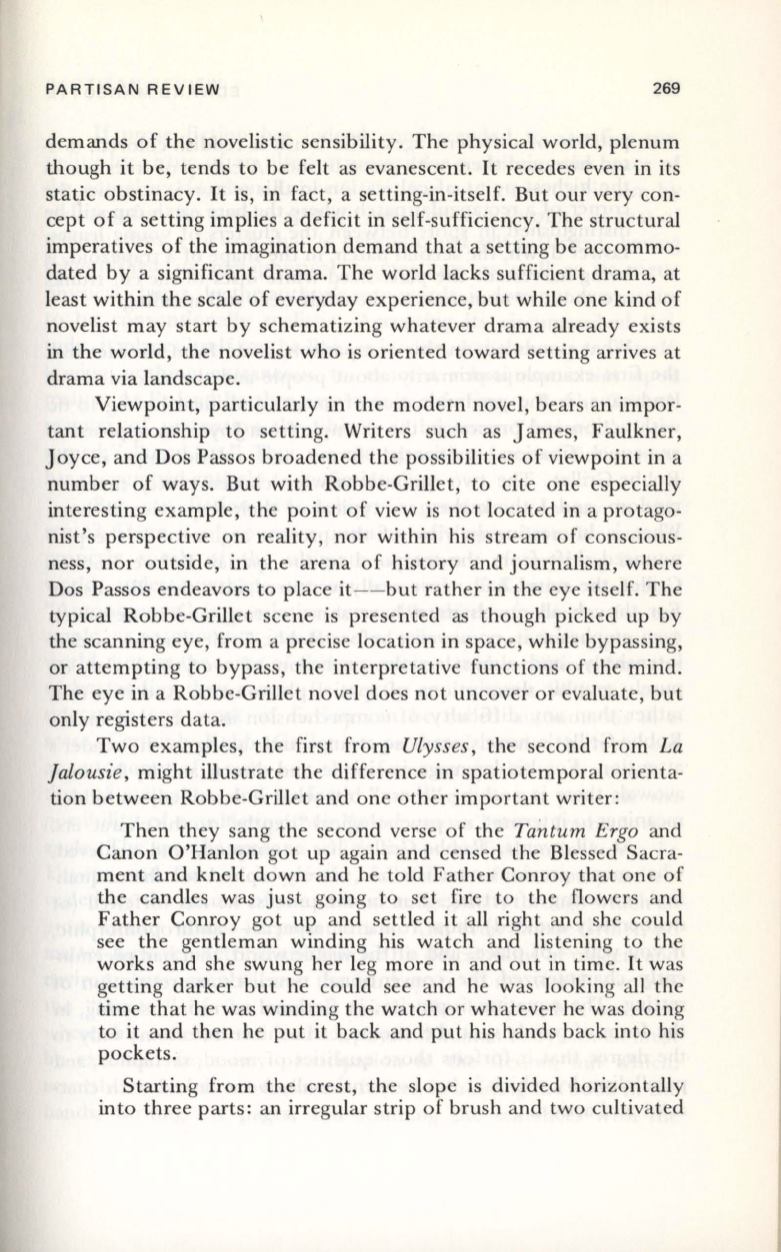
PARTISAN REVIEW
269
demands of the novelistic sensibility. The physical world, plenum
though it be, tends to be felt as evanescent. It recedes even in its
static obstinacy. It is, in fact, a setting-in-itself. But our very con–
cept of a setting implies a deficit in self-sufficiency. The structural
imperatives of the imagination demand that a setting be accommo–
dated by a significant drama. The world lacks sufficient drama, at
least within the scale of everyday experience, but while one kind of
novelist may start by schematizing whatever drama already exists
in the world, the novelist who is oriented toward setting arrives at
drama via landscape.
Viewpoint, particularly in the modern novel, bears an impor–
tant relationship to setting. Writers such as James, Faulkner,
Joyce, and Dos Passos broadened the possibilities of viewpoint in a
number of ways. But with Robbe-Grillet, to cite one especially
interesting example, the point of view is not located in a protago–
nist's perspective on reality, nor within his stream of conscious–
ness, nor outside, in the arena of history and journalism, where
Dos Passos endeavors to place it--but rather in the eye itself. The
typical Robbe-Grillet scene is presented as though picked up by
the scanning eye, from a precise location in space, while bypassing,
or attempting to bypass, the interpretative functions of the mind.
The eye in a Robbe-Grillet novel does not uncover or evaluate, but
only registers data.
Two examples, the first from
Ulysses,
the second from
La
Jalousie,
might illustrate the difference in spatiotemporal orienta–
tion between Robbe-Grillet and one other important writer:
Then they sang the second verse of the
Tantum Ergo
and
Canon O'Hanlon got up again and censed the Blessed Sacra–
ment and knelt down and he told Father Conroy that one of
the candles was just going to set fire to the flowers and
Father Conroy got up and settled it all right and she could
see the gentleman winding his watch and listening to the
works and she swung her leg more in and out in time. It was
getting darker but he could see and he was looking all the
time that he was winding the watch or whatever he was doing
to it and then he put it back and put his hands back into his
pockets.
Starting from the crest, the slope is divided horizontally
into three parts: an irregular strip of brush and two cultivated


